
Photographica Pages
An online guide to collectable cameras and related stuff
Zeiss Ikon Ikonta and Ikomat
Around 1930 it appears that Zeiss Ikon began to rationalize the folding cameras in their catalog. Much
of the confusing array of different models that
was inherited in the merger, and that often competed for the same market were being fazed out, and
the new line of Ikontas were introduced. Initially, cameras
with less expensive lenses were marked Ikomats, but were the same body, and carried the same
number designation.
The first of the Ikonta cameras were the 520 series. They were available as 520 (4.5 x 6cm), 520/2 (6 x
9cm), 520/14 (5 x 7.5cm), 520/15 (6.5 x 11cm),
520/16 (6 x 6cm) and 520/18 (3 x 4cm).
The 520/14 was produced around 1930 or so. It was an unusual format, the only other Zeiss cameras I
know of to share this format was a Box Tengor and a
Cocarette. It was available with either a 80/4.5 Tessar lens in Compur shutter, or a 80/6.3 Novar in
Derval. I don't believe this model was produced for long.
The 520/18 is commonly referred to as the "Baby Ikonta". Apparently it was available from
about 1932 until 1936. It was available with a 50/6.3
Novar, 50/4.5 Novar or 50/4.5 Tessar initially, and in 1936 with either a 50/3.5 Tessar or 50/3.5 Novar.
These were very small and pocketable, and most examples found today show wear to the black paint
trim, with the exposed metal showing signs of rust, a testament to their being carried around.
The above models were never given a letter designation to their size. The next four Ikontas were
lettered "A" through "D", in addition
to the suffix on their Zeiss number.
The smallest is the Ikonta A. It is catalog number 520, the 4.5 x 6cm format not receiving a suffix to it's
number. It was available with either a 80/3.5
Tessar or 80/4.5 Novar, both in Compur shutter.
The square format Ikonta was the Ikonta B, 520/16. It was introduced a bit later than the rest, around
1937. It could be had with 75/3.5 Tessar in Compur
Rapid shutter, or 75/3.5 and 75/4.5 Novar lenses, in either Compur or Klio shutters.
The Ikonta C is the 6 x 9cm model, 520/2. It was available with 105/ 3.8 Tessar (1936 and 1937 only),
105/4.5 Tessar or 105/6.3 Novar.
The largest of the Ikontas was the Ikonta D, 520/15. Early versions use 116 film, later it was changed to
616. It could be had with a 120/4.5 Tessar in
Compur, or 120/4.5 or 6.3 Novars in Derval shutter.
Around 1940 the 520 series was discontinued. With the war heating up, it appears that some of the 521
series may have been built in the 4.5 x 6cm size,
but most of the production was built after the war.
The 521 series featured a body release with double exposure prevention, and most of the hardware
was now chrome. All of the 521 series use 120 film, only
the A, B and C models were continued.
The Ikonta A 521 was available with a 75/3.5 Tessar in Compur Rapid initially, or later with Synchro
Compur shutter. It was also available with a 75mm Novar lens either a 3.5 or 4.5, in Prontor or
Compur shutter.
The Ikonta B 521/16 can be found with 75/3.5 Zeiss Opton Tessar, or Novars of either 3.5 or 4.5
maximum aperture.
The Ikonta C 521/2 was now the largest of the Ikonta line. It could be had with a 105/3.5 Tessar,
105/3.5 Novar, or 105/4.5 Novar.
It appears that the Ikonta A 521 was carried until 1956, the others seem to have been replaced by the
523 and 524 series in 1954. It gets complicated looking at what written literature is available. In addition
to the Zeiss catalog number, which is not usually given in most references, the models were referred
to by size as A, B and C, and later as I, II and III. Near as I can tell the 523 series replaced the 521
series, but they may have been produced concurrently
after 1954. The 523 Ikontas have a chrome top plate which covers the entire top, housing a non-folding
finder. Neither of these models is very common. Both
models were discontinued in 1956.
The Ikonta 523/16 could be had with either Tessar or Novar 3.5 lenses in Syncro Compur or Pronto
shutters. These are sometimes referred to as Ikonta II or IIb cameras.
The larger 523/2 can be found with Tessar or Novar 3.5 lenses, or Novar 4.5.
At the same time as the 523 series was introduced, so was the 524 series. In addition to the Zeiss
catalog number, the format letters and numbers in use,
these cameras were referred to as Mess-Ikontas. They were very similar to the 523 series, with the
addition of an uncoupled rangefinder. The lenses available
were very similar to the 523 series.
The remaining model of Ikonta is the Ikonta 35, 522/24. It was one of the first models released when
Zeiss Ikon resumed production after the war, and loss
of most of it's factories and equipment. It is a simple folding camera for 35mm film, with specifications
not unlike the Kodak Retina I cameras. It was a
viewfinder camera of horizontal design, of very sturdy construction. Early models lack an accessory
shoe. Lenses available included 45/2.8 Tessar or 45/3.5
Novar. In 1949-51 it was offered with a 45/2.8 Schneider Xenar due to a lack of Tessar lenses
available. It was produced from 1949-53, a version for export was
marketed from 1952-55 as the Contina, and shared the same Zeiss catalog number. It's design was the
basis for the elegant and very successful first model of
Contessa.
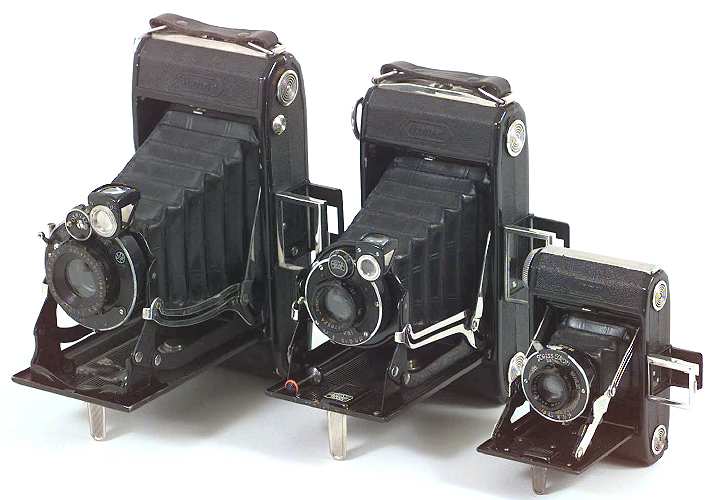
Some of the 520 series.
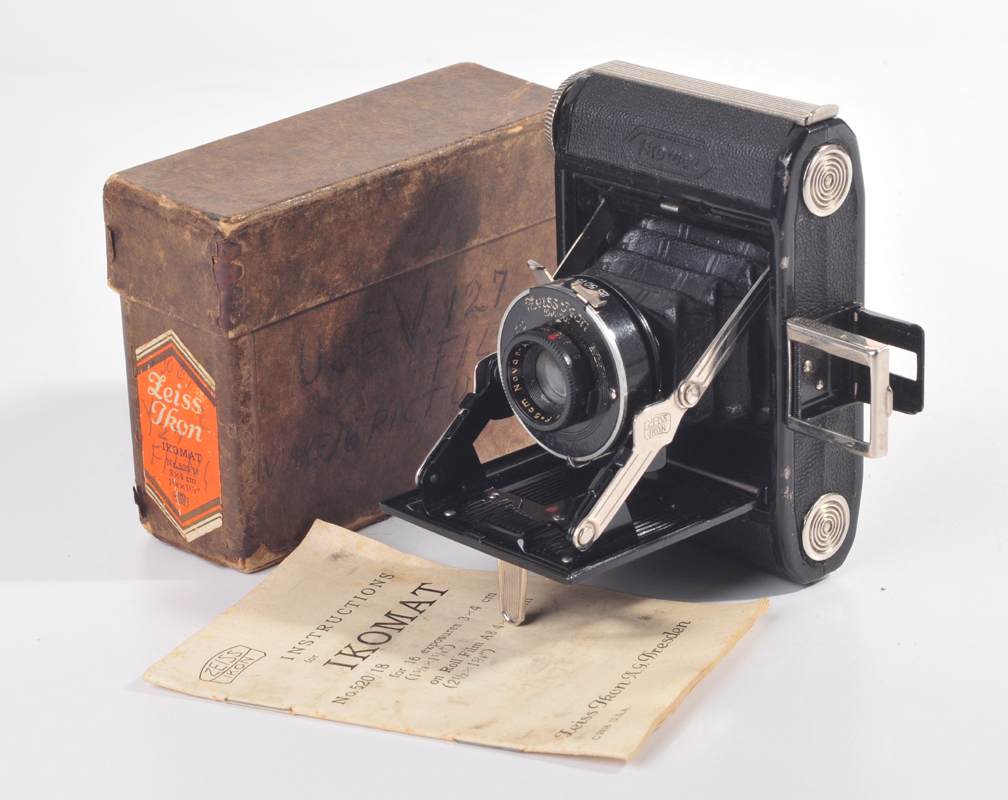
The Ikonta 520/18.

The Ikonta 520/16.

The Ikonta 520/2.
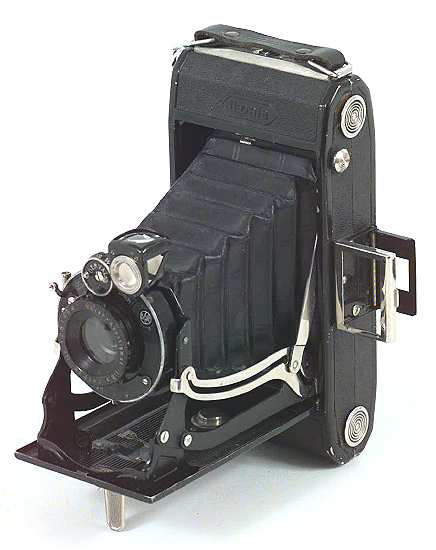
The Ikonta 520/15.
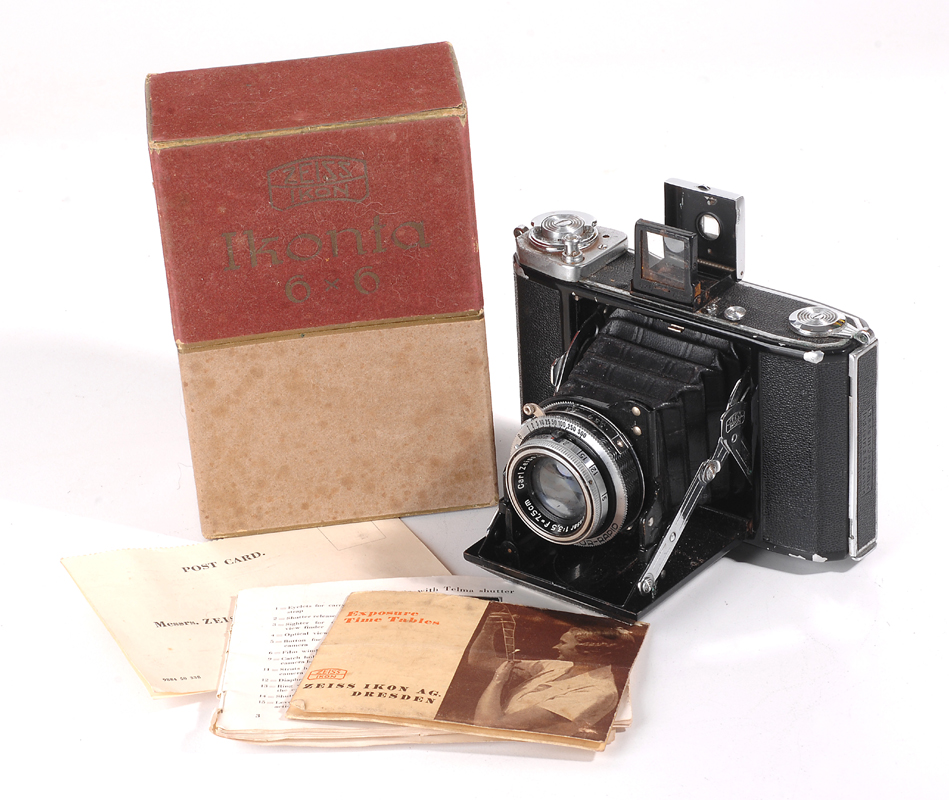
The Ikonta 521/16.
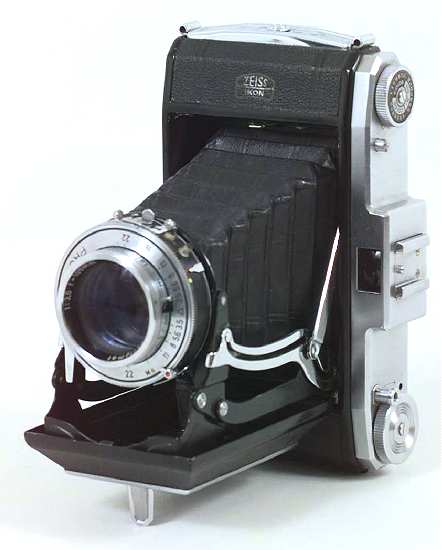
The Ikonta 523/2.
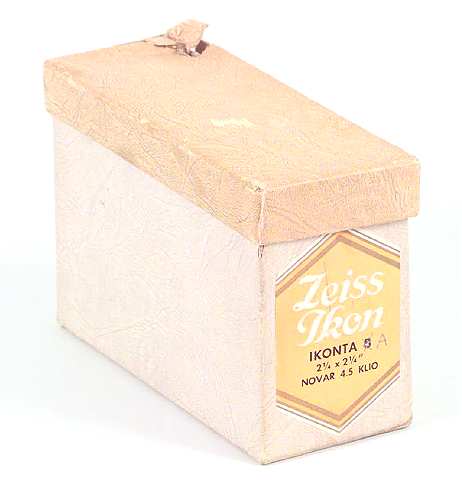
A fairly early style box.

Some of the 520 series.

The Ikonta 520/18.

The Ikonta 520/16.

The Ikonta 520/2.

The Ikonta 520/15.

The Ikonta 521/16.

The Ikonta 523/2.

A fairly early style box.
